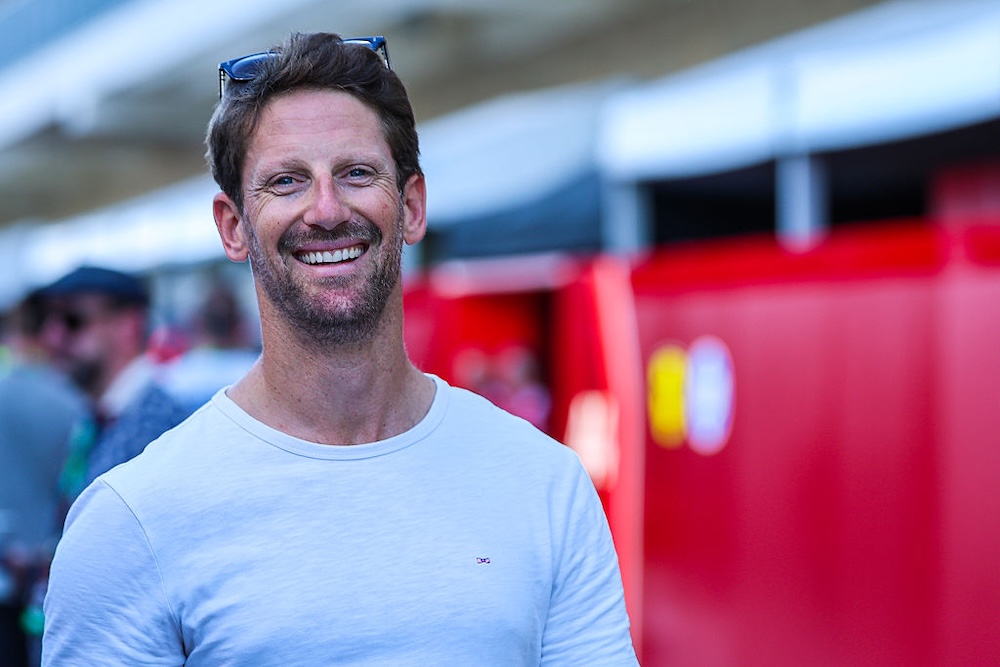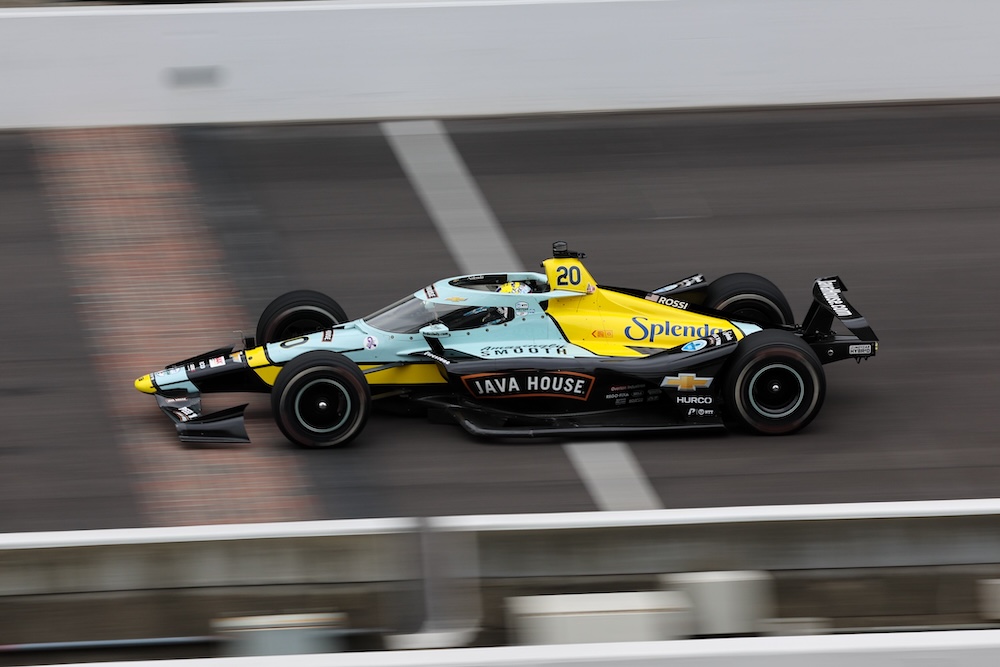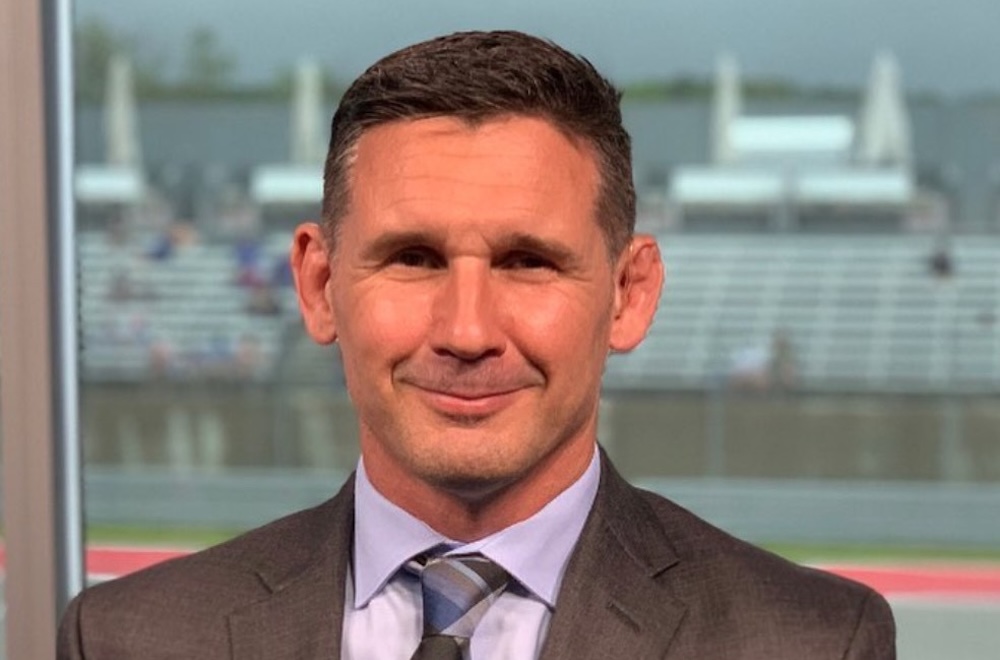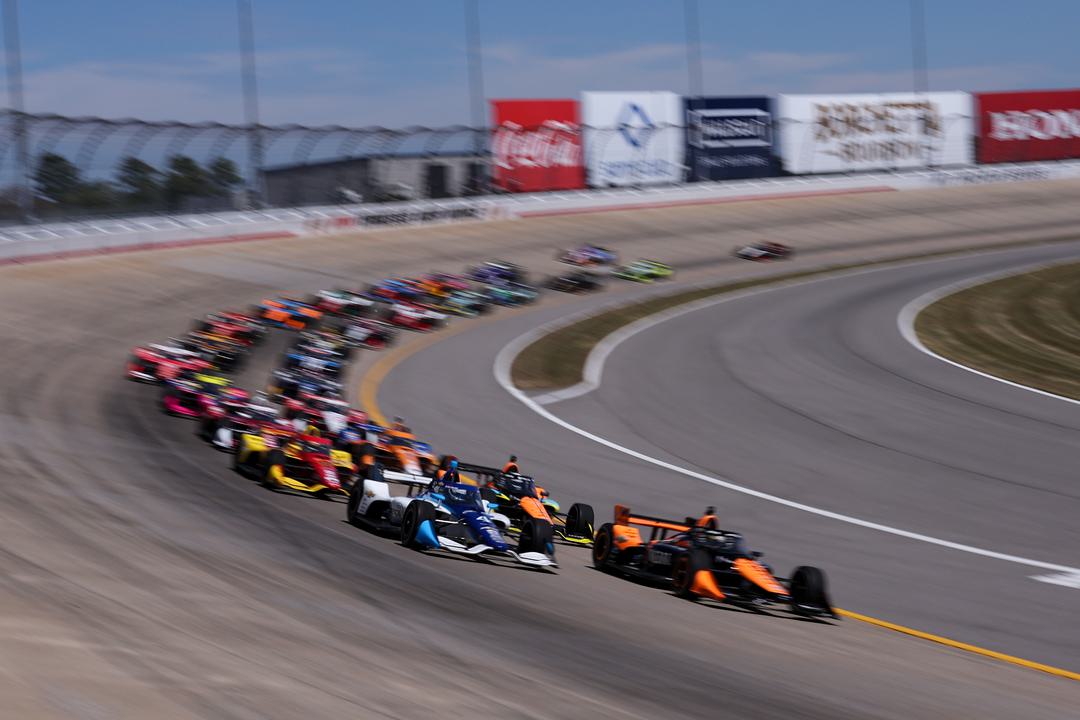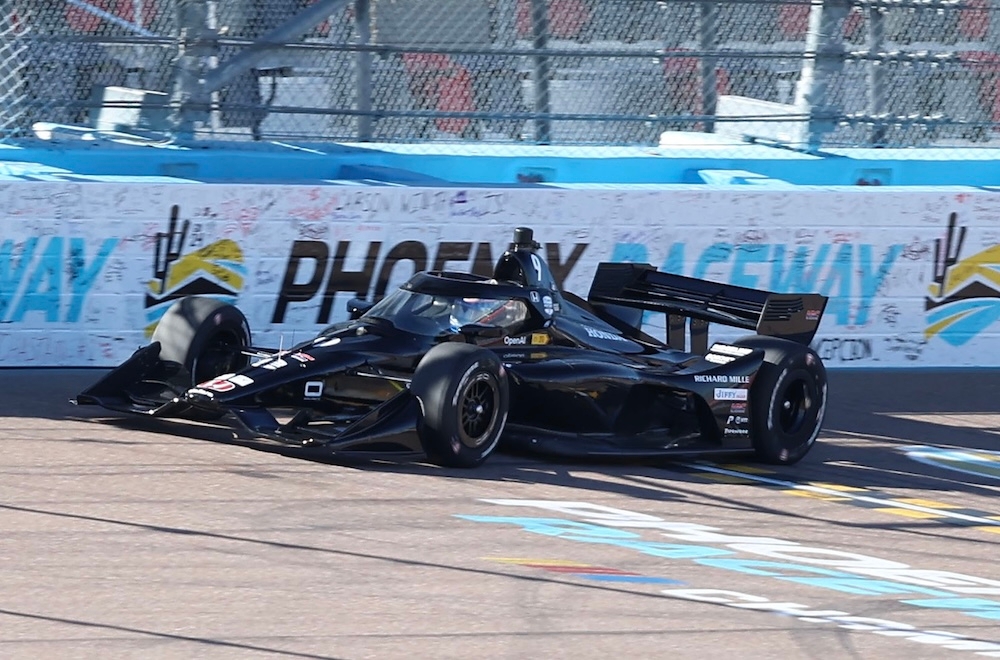
Eddie Rea/IndyCar
ShareThis is disabled until you accept Social Networking cookies.
Firestone on the right track at Phoenix IndyCar tire test - Dixon
Seven years removed from their last on-track activity at the one-mile Phoenix Raceway oval, Scott Dixon was there along with Alexander Rossi on Thursday to start a two-day test and help Firestone work through a wide array of tire options for the March 6-7 race weekend IndyCar will share with NASCAR.
“It’s good to be back doing a proper tire test,” Dixon told RACER during a break from driving his No. 9 Chip Ganassi Racing Honda. “It's been a long time since I've done a proper tire test. We’ve got compounds, we’ve got constructions, we've got tire widths. Even stuff I've never done before, so it's kudos to Firestone for getting after it. I think it shows that they're a true partner, and that's better for everybody.”
Since IndyCar’s last Phoenix Raceway appearance in 2018, the series’ venerable Dallara DW12 has gained 50-ish pounds from the installation of the aeroscreen driver safety device along with approximately 100 pounds more added to the rear of the DW12s with the energy recovery systems. Combined, the cars carry the equivalent of an extra driver in weight, and that’s shaped how Firestone and the series have approached this week’s fact-finding run in Arizona.
IndyCar’s traditional short-oval technical specification calls for high turbocharger boost settings – similar to what’s used on road and street courses – but the series is testing with Dixon’s car and Rossi’s No. 20 Ed Carpenter Racing Chevy on low boost to bring down peak power and speeds by a modest amount. The move was made to exert less stress on the tires, which have the increased weight of the DW12 and high downforce to manage throughout each lap.Throw in the visuals from last weekend’s NASCAR season finale at Phoenix where championship-altering tire failures happened at a regular clip, and Dixon says he appreciates the mindset that’s been applied to IndyCar’s running at the track.
“Definitely the car is in a much different configuration with the aeroscreen, the hybrid; it's significantly heavier,” he added. “The good thing is, for the tire test, you're actually looking for stuff to, more than anything, help the racing, opposed to going after pure performance. You used to do that more in the past where you'd go for the best tire, grip-wise, with the best degradation.
“Just to look at how the Cup race here, and I don't know how many tire failures they had – maybe 20, 30, 40. It was insane. And it actually determined the championship outcomes. So I think for [Firestone], it's good to obviously look at different changes, because the car has changed significantly over the years. Yet it's the same size tire. The cars got from the first iteration of the DW12, we’re up hundreds of pounds, but with the same wheel size.
“The CG (center of gravity) is a lot higher as well. So I think it's important to know what you're looking for. Make the racing better. And I think that's really what you’ve got to chase first. Now, you're looking for maybe the higher grip with a peak and then quite a rapid deg to it. So I think it's important, what we’re trying, not just for this track, but for definitely some of the others down the road as well.”
Pole position for the 2018 race, when the DW12s were much lighter and more powerful went to Dale Coyne Racing’s Sebastien Bourdais at 19.5s (188.5mph) in the No. 18 Honda. During Thursday morning’s session, Dixon posted a 21.233s and Rossi was close behind with a 21.441s. In the afternoon, Dixon improved to a 21.092s and Rossi effectively matched it with a 21.107s as both drivers logged more than 200 laps throughout the day spent doing short runs. IndyCar also had CGR and ECR try a range of downforce options, but lap times weren’t affected.
“We’re on a lot lower power opposed to high boost, so that's significant,” Dixon said. “I think you'll be in the mid-20s in qualifying, so it'd be about a second off (of Bourdais’ pole), which, honestly, that's mostly just power.”
The six-time IndyCar champion, who won the Phoenix race in 2016, is confident the NASCAR fans who’ll see the IndyCar Series in action on the Friday and Saturday of March’s Cup weekend will be impressed by the extreme difference in speeds. At qualifying lap times of 20.5s, the average speed would be in the 175mph range. Pole for last Sunday’s Cup race set by Denny Hamlin was 133.7mph.
“They will be like, holy ****, these things are f****** fast compared to what else is out there on the same day,” Dixon surmised. “Our average speed must be 40-50 miles an hour higher or something stupid.”
Topics
ShareThis is disabled until you accept Social Networking cookies.
Marshall Pruett
The 2025 season marks Marshall Pruett's 39th year working in the sport. In his role today for RACER, Pruett covers open-wheel and sports car racing as a writer, reporter, photographer, and filmmaker. In his previous career, he served as a mechanic, engineer, and team manager in a variety of series, including IndyCar, IMSA, and World Challenge.
Read Marshall Pruett's articles
Latest News
Comments
Disqus is disabled until you accept Social Networking cookies.
